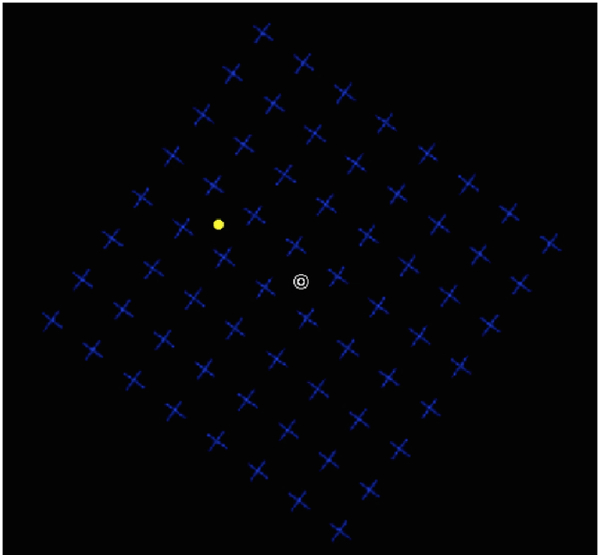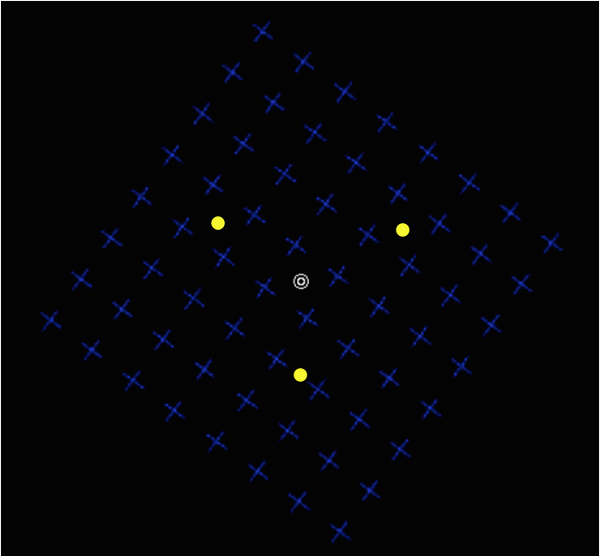Motion-induced Blindness
Overview
Source: Laboratory of Jonathan Flombaum—Johns Hopkins University
One thing becomes very salient after basic exposure to the science of visual perception and sensation: what people see is a creation of the brain. As a result people may fail to see things, see things that are not there, or see things in a distorted way.
To distinguish between physical reality and what people perceive, scientists use the term awareness to refer to what people perceive. To study awareness, vision scientists often rely on illusions-misperceptions that can reveal the ways that the brain constructs experience. In 2001, a group of researchers discovered a striking new illusion called motion-induced blindness that has become a powerful tool in the study of visual awareness.1
This video demonstrates typical stimuli and methods used to study awareness with motion-induced blindness.
Procedure
1. Stimulus
- Doing a motion-induced blindness experiment requires software or a programming environment that can make simple animations and collect keypress responses.
- The basic motion-induced blindness stimulus involves three features: a square made up of bright blue crosses on a black background, a bright yellow disc towards one of the corners of the space occupied by the square, and a white disc in the centre of the screen to serve as a fixation point. Figure 1 shows a single fram
Results
Figure 2 shows typical results from a single observer. The moving blue crosses cause the brain to believe that the yellow discs may not really be there. But the more discs there are, the less the brain seems to trust that intuition. So only one disc is more likely to disappear compared to two or all three.

Figure 3:
Application and Summary
Motion-induced blindness demonstrates that the brain constructs awareness, and that it can decide what to include there or not. But why does this stimulus cause the brain to believe that the yellow discs are not actually there, deleting them from awareness? One of the applications of this relatively new technique emerges from a theory designed to answer that question.
The theory is known as the Perceptual Scotoma theory, proposed in 2008.2 A scotoma is the name for an injury inside
Skip to...
Videos from this collection:

Now Playing
Motion-induced Blindness
Sensation and Perception
7.0K Views

Color Afterimages
Sensation and Perception
11.2K Views

Finding Your Blind Spot and Perceptual Filling-in
Sensation and Perception
17.4K Views

Perspectives on Sensation and Perception
Sensation and Perception
11.9K Views

The Rubber Hand Illusion
Sensation and Perception
18.6K Views

The Ames Room
Sensation and Perception
17.6K Views

Inattentional Blindness
Sensation and Perception
13.4K Views

Spatial Cueing
Sensation and Perception
15.0K Views

The Attentional Blink
Sensation and Perception
16.1K Views

Crowding
Sensation and Perception
5.8K Views

The Inverted-face Effect
Sensation and Perception
15.7K Views

The McGurk Effect
Sensation and Perception
16.1K Views

Just-noticeable Differences
Sensation and Perception
15.4K Views

The Staircase Procedure for Finding a Perceptual Threshold
Sensation and Perception
24.4K Views

Object Substitution Masking
Sensation and Perception
6.6K Views
Copyright © 2025 MyJoVE Corporation. All rights reserved

